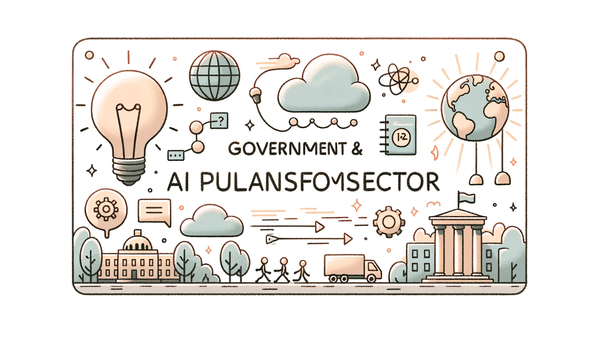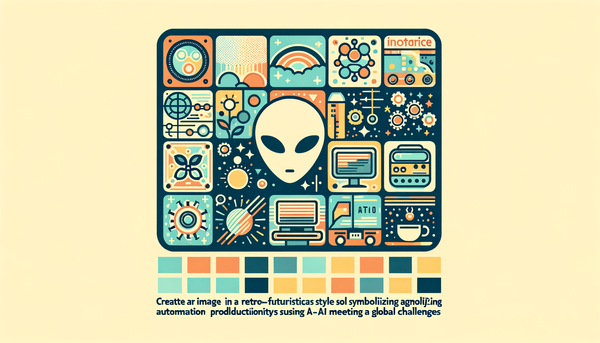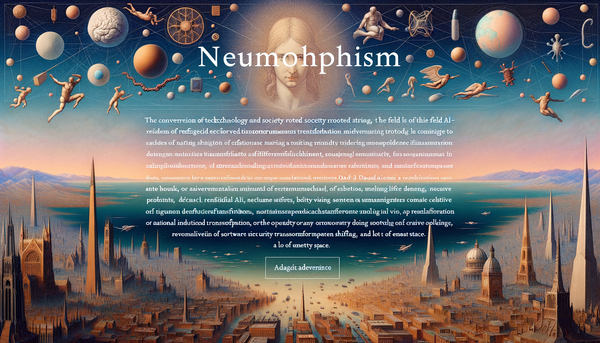The Ever-Evolving Frontier of AI
In a time of global uncertainty, a $2 billion seed funding round for innovative AI projects proves that breakthroughs continue, powering revolutionary ideas from enterprise automation to policy reform and creative reimagination.
Resilience in Investment and Innovation
Investors have shown an unwavering appetite for artificial intelligence despite economic turbulence. A striking example emerges from Mira Murati’s recent achievement, where the visionary behind Thinking Machines secured an astounding $2 billion in seed funding—even as financial markets floundered. This capital injection reinforces the belief that the AI boom is anything but transient, and that innovation will persist even during hard times. Venture capital and strategic investors are betting that AI will not only outlast the current economic challenges but will also catalyze industry-wide transformation across sectors such as healthcare, finance, and autonomous systems.
This resilient spirit in funding is not isolated. In China, a new AI Industry Investment Fund has been announced to channel over US$8 billion into early-stage projects—echoing similar sentiments across the globe. The Chinese initiative highlights how strategic funding is fueling a competitive race in AI research and development. With government bodies aligning with industrial finance goals, this fund is set to bolster the domestic tech sector while reducing reliance on foreign technologies.
These investment stories create a mosaic of determination and foresight in the AI sector. If you are interested in exploring more on how innovation meets ethical challenges in technology, you can dive into our discussion on Navigating the AI Frontier: Innovation, Impact, and Ethical Challenges.
Transformative Shifts in Enterprise AI
Enterprise AI is undergoing a significant evolution with platforms such as Writer’s "AI HQ" leading the charge. This groundbreaking platform is built on an architecture that redefines how businesses interact with AI. Unlike traditional automation, AI HQ promotes a structure where sophisticated agents can undertake complex workflows autonomously. These smart agents—designed with the input of both IT and business teams—are set to not only automate tasks but to analyze, adapt, and optimize decision-making processes across organizations.
Consider the example of investment firms leveraging these agents for automated reporting or marketing teams streamlining operations across diverse platforms. Such use cases are transforming mundane business functions into dynamic, digitally powered processes. The proactive nature of these agents moves far beyond the reactive responses of chatbots, ensuring that businesses can preempt challenges rather than merely react to them.
May Habib, CEO of Writer, has pointed out that this is not just an exercise in efficiency but a redefinition of roles and responsibilities in workplaces. The debut of self-evolving models that learn from past interactions offers a glimpse into a future where AI isn't just a supplemental tool, but a central component of strategic business processes. For a broader perspective on how companies are integrating complex AI strategies into their workflows, you might like our article on Navigating the Rapidly Evolving AI Landscape.
Governance, Ethics, and Policy Initiatives
While technological prowess continues to expand, policymakers and local governments are stepping in to ensure that the deployment of AI is both ethical and equitable. San Diego County, for instance, is spearheading a new policy initiative aimed at governing AI use in local government operations. By aligning with principles similar to the Biden administration’s AI Bill of Rights, county supervisors like Joel Anderson and Terra Lawson-Remer are striving to balance the transformative benefits of machine learning with necessary safeguards for citizen data, public trust, and inclusivity.
This policy aims to design a framework with strict vendor accountability and an emphasis on workforce education. It is a proactive approach to counterbalance a technology's inherent risks—such as algorithmic bias or privacy breaches—with rigorous oversight and community engagement. The discussions in San Diego echo historical regulatory efforts that accompanied previous technological revolutions, reminding us of the need for governance even in times of rapid innovation.
Moreover, similar regulatory debates are occurring on national and global platforms, with many experts urging that such frameworks be adaptable enough to evolve alongside technology. Learning from such initiatives, communities and governments worldwide are defining how to harness AI for public good without compromising ethical standards. Readers interested in a deep dive on AI ethics and regulation can check our detailed analysis in Exploring AI's Expansive Frontier.
Advancements in AI Interaction and Memory
Significant strides have also been made in how AI interacts with its users. In one of the latest notable developments, OpenAI has upgraded ChatGPT's memory capabilities. The new memory upgrade allows the AI to refer back to past interactions, thereby offering more personalized and contextually relevant responses. This enhancement means that ChatGPT evolves into a digital partner—one that recalls user preferences and adapts to their conversational nuances much like a human assistant would.
In today's data-driven age, having AI that "remembers" user interactions transforms the nature of human-AI engagement. By offering users the ability to reference previous dialogues and extract chronological summaries, this technology not only improves the personalization of user interactions but also increases efficiency. As an interesting side note, this capability echoes the age-old idea that remembering our past helps us do better in the future—a notion famously encapsulated in many historical narratives detailing human evolution and intelligence.
Enhancements in AI memory are coupled with similar innovation in everyday tools. Google Docs, for instance, has rolled out its new Audio Overviews feature. This tool reads your document aloud in a human-like voice and even provides summarized overviews, blending the worlds of productivity and audio engagement. It's a brilliant example of how AI transforms continuity in work environments, making content review both efficient and accessible, particularly for users with visual impairments or busy lifestyles.
Creative Transformations and the Arts
Behind the scenes of these practical applications is a revolution in creativity and culture. Google is pushing boundaries by employing AI to alter movies for its innovative project, The Sphere—a 360-degree immersive entertainment venue. This venture into reconceptualizing film using deep learning is stirring up debate among creatives and critics alike. By manipulating scenes in real-time—enhancing visuals, tweaking soundscapes, and even modifying characters' performances—AI is challenging traditional notions of storytelling.
While some worry that such technologies might erode the original artistic intent of filmmakers, many see them as opening the door to interactive narratives and personalized viewing experiences. This clash between tech innovation and creative heritage reminds us of similar debates during the early days of digital editing and CGI, where fears of stripping art of its soul slowly gave way to acceptance and new forms of creativity.
“We might even make this after all,’ he hollered, but the craft didn’t reply.— A.R. Merrydew, Inara
Curious how AI is intertwining with creative industries? Our readers have enjoyed exploring these themes in articles like Unpacking the Multifaceted Landscape of AI, where the transformative power of AI on society and culture is vividly illustrated.
Balancing Technological Ambition with Environmental Responsibilities
Innovation in AI is not without its environmental challenges. A recent development involving Elon Musk's xAI has brought environmental stewardship sharply into focus. Alleged overuse of gas turbines at their data center in Memphis has stirred controversy and raised serious questions regarding compliance with air quality regulations. With claims that the facility has installed more turbines than permitted, leading to potentially hazardous emissions of nitrogen oxides, this case embodies the growing tension between rapid technological advancement and responsible environmental management.
On a broader scale, the rise of AI data centers is set to redefine the energy landscape in the United States. According to projections from the International Energy Agency, electricity consumption by AI data centers could more than double by 2030—surpassing current consumption of entire countries, such as Japan, by a significant margin. These data centers, coupled with their voracious energy demands, force us to rethink sustainability and energy policy in an era where AI is embedded in nearly every facet of business and daily life.
This situation motivates a pivotal reflection: as we harness the immense potential of AI, we must also innovate to reduce its environmental footprint. Policies and technological solutions geared toward renewable energy sources and more efficient processing infrastructures are no longer optional but necessary. The future intersection of AI and environmental technology forms a compelling frontier for research and policy-making.
The Broader Implications on Business, Society, and Daily Life
The evolution of AI is not confined to isolated breakthroughs; it is a comprehensive transformation that permeates every layer of our society. From enterprise solutions that are reshaping business models to regulatory frameworks being stitched together by local governments, AI projects a future where technology is intricately woven into the fabric of everyday life.
For instance, AI advancements in voice and natural language processing are proving invaluable in both professional and creative contexts, as seen with the new Audio Overviews in Google Docs. These enhancements not only bolster efficiency but also open up avenues for improved accessibility. Picture the convenience of proofreading your document while driving—such tools are designed to integrate seamlessly into our multitasking lifestyles.
Furthermore, the interplay between creative industries and AI signals a renaissance in storytelling and expression. Technologies that once appeared purely utilitarian are now challenging the boundaries of art, leading to immersive experiences that feed our imaginations while prompting us to question what it means to preserve artistic integrity in a digital age.
This integrated view of AI—as both an enabler of enterprise efficiency and a catalyst for cultural evolution—reinforces the idea that its impact is wide-ranging and profound. It is a testament to the dynamic, ever-evolving nature of technology that the industry continues to grow and adapt, often defying expectations.
For those looking to further explore the transformative journey of AI, our insights on Navigating the AI Frontier: Innovation, Impact, and Ethical Challenges and Unpacking the Multifaceted Landscape of AI offer compelling narratives that encapsulate both the promise and the complexities of this technological era.
Reflections and Looking Ahead
Every development in AI—from the monumental funding rounds and enterprise innovations to the new policy frameworks and environmental challenges—tells a part of a larger story. It is the story of a technology that continually reshapes our world, urging us to innovate responsibly, think creatively, and adapt to rapid change.
Indeed, while the future trajectory of AI may hold unprecedented opportunities, it also brings to light significant responsibilities. As we celebrate breakthroughs like advanced memory in ChatGPT, innovative platforms like AI HQ, or transformative creative applications by companies like Google, let us also embrace the call for thoughtful regulation and environmental stewardship. In echoing Nick Bostrom’s sentiment—"Machine intelligence is the last invention that humanity will ever need to make."—we are reminded that our journey into this AI frontier is both an exciting and honorable pursuit.
Curiosity, caution, and creativity are key as we traverse these ever-evolving landscapes. In this dynamic domain, each new advancement is a stepping stone that invites us to not only marvel at what is possible but also to actively shape a future where technological ambition and human values coexist in harmony.




